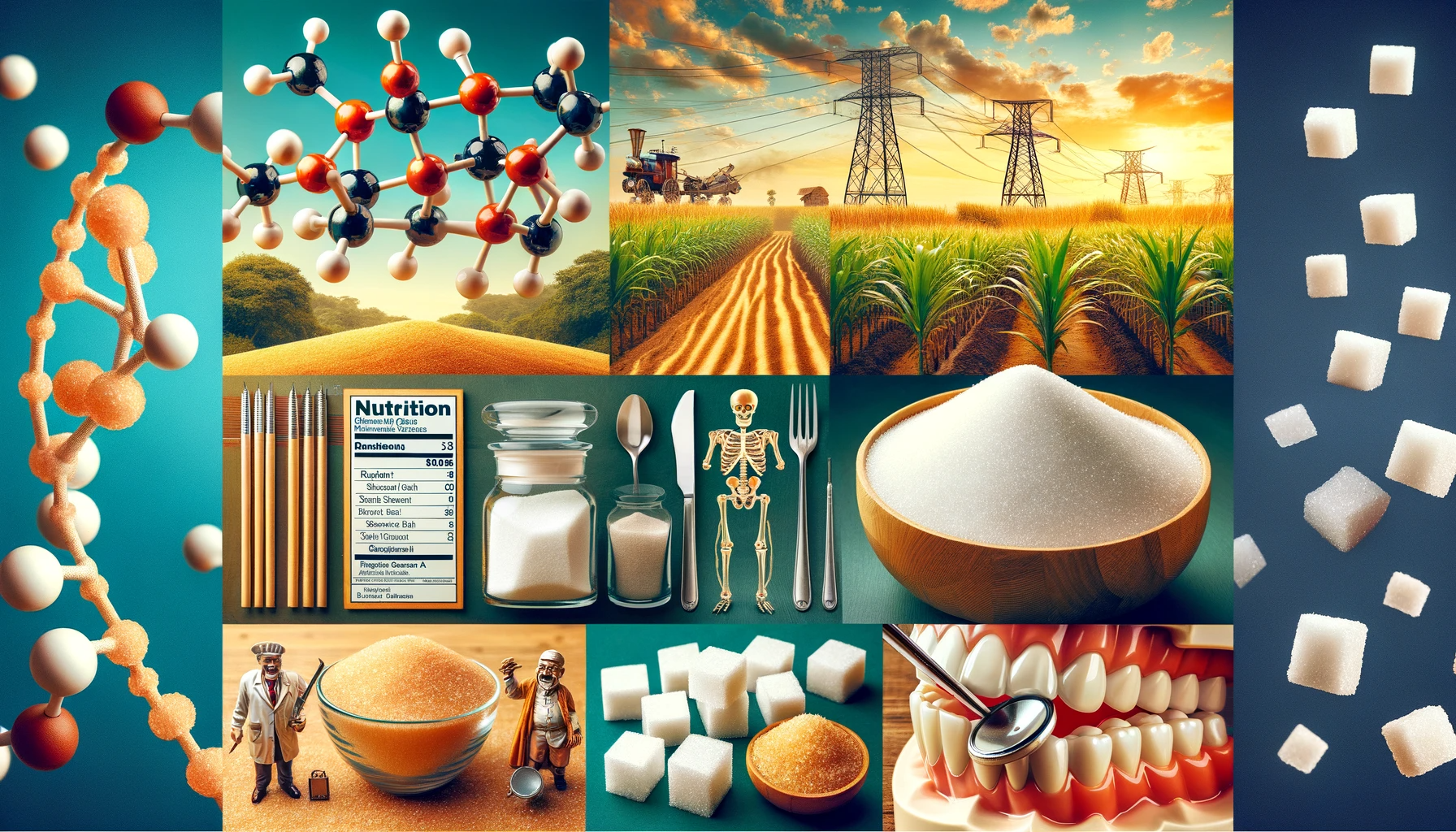Introduction
Sugar cravings are a common occurrence that many of us have experienced at one point or another. Whether it’s the irresistible allure of a chocolate bar or the desire for a sweet, frothy latte, sugar cravings can be hard to resist. But have you ever wondered what’s behind these cravings? Is it purely a matter of willpower, or is there a scientific explanation for our insatiable desire for sugar? In this article, we will delve deep into the science of sugar cravings and explore the ingredients behind the urge.
Understanding the Biology of Sugar Cravings
1. The Brain’s Reward System
The human brain plays a significant role in driving our sugar cravings. When we consume sugary foods, our brain’s reward system is activated. This system releases neurotransmitters like dopamine, which are responsible for making us feel pleasure and satisfaction. Over time, our brain associates the consumption of sugar with these pleasurable sensations, leading to cravings when we’re stressed or in need of a mood boost.
2. Blood Sugar Levels
Our blood sugar levels also impact our cravings. When we consume sugary foods, our blood sugar levels spike rapidly. In response, the body releases insulin to regulate blood sugar, leading to a subsequent drop in glucose levels. This drop can trigger sugar cravings as our body seeks to replenish its energy source.
The Role of Hormones
1. Leptin and Ghrelin
Two hormones, leptin, and ghrelin, play vital roles in regulating our appetite and cravings. Leptin, often referred to as the “satiety hormone,” signals to our brain that we are full. However, excessive consumption of sugar can lead to leptin resistance, making it harder for our brain to receive this satiety signal. On the other hand, ghrelin, known as the “hunger hormone,” increases our appetite and can become imbalanced due to sugar consumption, leading to more frequent cravings.
2. Insulin Resistance
Insulin resistance is another hormonal factor contributing to sugar cravings. When we consume sugar in excess, our cells become resistant to the effects of insulin, the hormone responsible for regulating blood sugar. This can lead to an increase in hunger and sugar cravings, as the body struggles to regulate glucose levels.
Emotional and Psychological Triggers
1. Stress and Emotional Eating
Stress and emotions can trigger sugar cravings as well. When we’re stressed or experiencing negative emotions, our brain often seeks comfort in sugary foods. This is because sugar can temporarily alleviate stress and improve our mood due to its impact on neurotransmitters.
2. Habitual Cravings
Habits play a significant role in our cravings. If we’ve developed a habit of indulging in sugary snacks at certain times of the day, such as during a coffee break, our body and mind may anticipate these cravings, making them harder to resist.
External Influences
1. Advertising and Marketing
The food industry invests heavily in advertising and marketing to make sugary products more appealing. Eye-catching packaging, catchy slogans, and persuasive marketing techniques can create a strong desire for sugar-filled products, even when we’re not experiencing physical hunger.
2. Availability and Accessibility
The easy availability of sugary snacks and beverages in our environment makes it challenging to avoid them. Whether it’s vending machines at work, convenience stores on every corner, or the prevalence of sugary options at restaurants, these factors make it more likely for us to give in to our sugar cravings.
Strategies to Combat Sugar Cravings
1. Balanced Diet
Maintaining a balanced diet that includes complex carbohydrates, fiber, and healthy fats can help stabilize blood sugar levels and reduce cravings.
2. Mindful Eating
Practicing mindful eating can help you become more aware of your cravings and make healthier choices. Pay attention to your body’s hunger cues and emotional triggers for eating.
3. Stress Management
Finding effective stress management techniques, such as exercise, meditation, or deep breathing, can reduce the emotional triggers for sugar cravings.
4. Limiting Sugar Intake
Gradually reducing your sugar intake can help break the cycle of cravings and allow your taste buds to adapt to less sugary foods.
5. Seek Support
If sugar cravings are a persistent issue, consider seeking support from a registered dietitian or healthcare professional who can provide personalized guidance and strategies.
Conclusion
Understanding the science behind sugar cravings can empower us to make healthier choices and reduce our reliance on sugary foods. By addressing the biological, hormonal, emotional, and environmental factors that contribute to sugar cravings, we can take control of our health and well-being. Remember, while sugar cravings may be challenging, they are not insurmountable, and with the right strategies, you can conquer the urge for that sweet treat and lead a healthier life.
